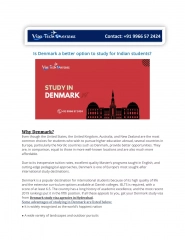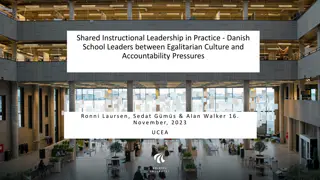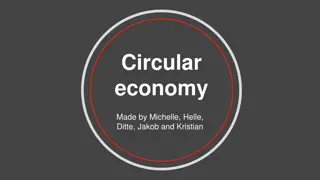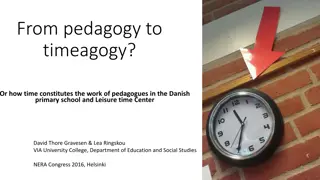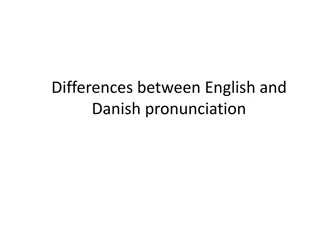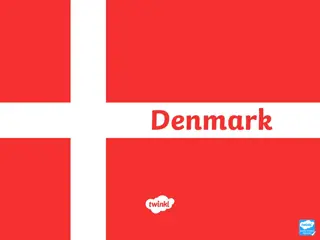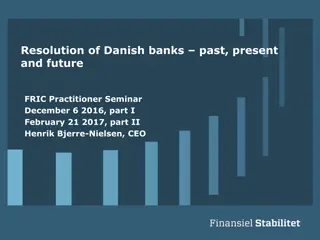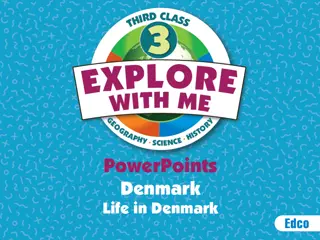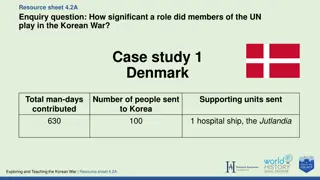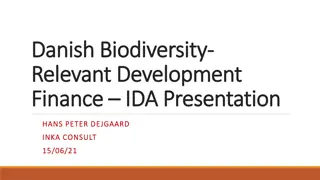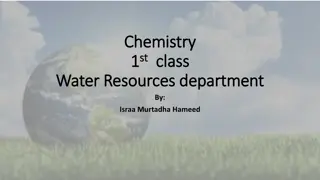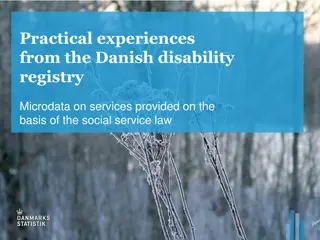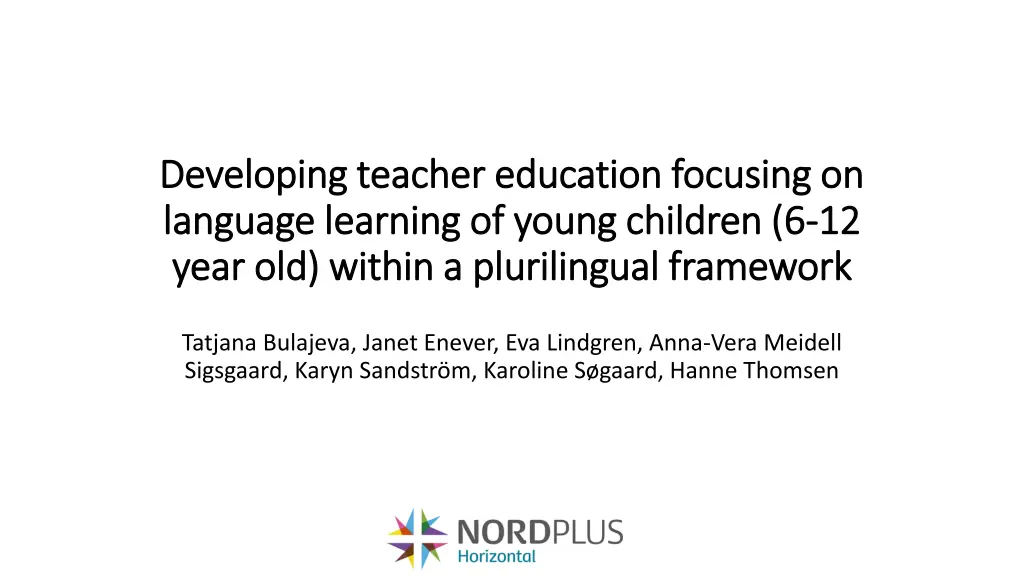
Developing Teacher Education for Language Learning in Young Children within a Plurilingual Framework
Explore the development of teacher education focusing on language learning in young children (6-12 years) within a plurilingual framework. Discussions revolve around using students' linguistic resources to enhance learning, balancing L1 and L2 use in classrooms, encouraging oral participation, and integrating written foreign languages. Case examples highlight the recognition and pronunciation of different languages by students.
Uploaded on | 0 Views
Download Presentation

Please find below an Image/Link to download the presentation.
The content on the website is provided AS IS for your information and personal use only. It may not be sold, licensed, or shared on other websites without obtaining consent from the author. If you encounter any issues during the download, it is possible that the publisher has removed the file from their server.
You are allowed to download the files provided on this website for personal or commercial use, subject to the condition that they are used lawfully. All files are the property of their respective owners.
The content on the website is provided AS IS for your information and personal use only. It may not be sold, licensed, or shared on other websites without obtaining consent from the author.
E N D
Presentation Transcript
Developing teacher education focusing on Developing teacher education focusing on language learning of young children (6 language learning of young children (6- -12 year old) within a plurilingual framework year old) within a plurilingual framework 12 Tatjana Bulajeva, Janet Enever, Eva Lindgren, Anna-Vera Meidell Sigsgaard, Karyn Sandstr m, Karoline S gaard, Hanne Thomsen
Background General discussion questions were developed in the Nordplus Horizontal workshop in Copenhagen February 2017. Relevant references which can be used to inform the discussion of language learning for young children (6-12 years) within a plurilingual framework with pre-service students are provided. For some of the questions, classroom snapshots were collected during classroom observations in the 'Learning Foreign Languages at an Early Age project. Reflection questions to be used with the snapshots in teacher education were also developed for some of these cases.
Definitions by Council of Europe Plurilingualism refers to the repertoire of varieties of language which many individuals use and is therefore the opposite of monolingualism; it includes the language variety referred to as mother tongue or first language and any number of other languages or varieties. Thus, in some multilingual areas some individuals are monolingual and some are plurilingual (Council of Europe, 2014 n.d.). Multilingualism refers to the presence in a geographical area, large or small, of more than one variety of language i.e. the mode of speaking of a social group whether it is formally recognized as a language or not; in such an area individuals may be monolingual, speaking only their own variety (Council of Europe, 2014 n.d.).
The general discussion questions 1. How can all students linguistic resources support what children learn in the first year of English classes? Can children who already have multiple languages handle foreign language classes? 2. What should be the balance of L1 and L2 use in the classroom? For teachers? For students? 3. How much oral participation should teachers encourage/require? In which languages? 4. How should written foreign language be included in language classes? How does this differ for 6- 7 year olds, vs 11-12 year olds? Why?
Case example: How can all students linguistic resources support what children learn in the first year of English classes? Can children who already have multiple languages handle foreign language classes? The teacher shows the students front covers of the storybook The Gruffalo in different languages on the whiteboard. A learner recognizes the Spanish version, he points out the Spanish cover page, and pronounces the name of the Gruffalo in Spanish. Another learner recognizes the title in Urdu. Look at the Russian version with different kinds of letters , says the teacher. Then a learner recognizes the Turkish version and says, My parents say it, but not that much . The class comments on the Welsh cover page, which also looks different, and they show great interest in it. Is there a Japanese front page? My dad knows Italian , a learner says, I have a friend, who comes from France , says another. The learners are very involved in the conversation and keen on participating. After the activity finishes a student asks the teacher: Is it really in all languages? Many , the teacher answers , Also in Arabic? , Yes, also in Arabic , Also in Somali? he mutters. The teacher doesn t hear him.
Suggested reflection questions How do the students, in general, respond to the different front pages? Do you see signs of increased linguistic awareness for all students? Do you see signs of students drawing on their existing linguistic resources? What are your thoughts on the exchange between the teacher and the student, who has Somali background, at the end?
Case example: Should teachers be using school language in foreign language classes? When? Why / Why not? It s time for English in a year 1 classroom. The teacher, who is also the Danish teacher, is preparing the room while the students are outside. The students are used to calling the teacher by her first name. She puts on a bright yellow vest used for English class and goes outside to bring them in: Ok everybody, find your partner, Ok, ready, let s go inside. The students respond in Danish and she replies in English: S: My drawing isn t any good! (dk) , T: That s ok, nevermind At the end of the lesson a student explains to me that in English class her name isn tKaren, but Miss K .
Suggested reflection questions What are some strategies that the teacher applies to maintain English as a classroom language? What would have been different if she had spoken the school language (in this case Danish)? How do you think the student feels when the teacher answers / responds to her remark in Danish, in English? Do you think it benefits students language acquisition that the teacher speaks English how? Can you think of situations where it would be appropriate for the teacher to speak the school language during English class when?
For the full document, including references and a critique of the Council of Europe definitions: https://earlyforeignlanguagelearning-nb.ku.dk/further-development/

